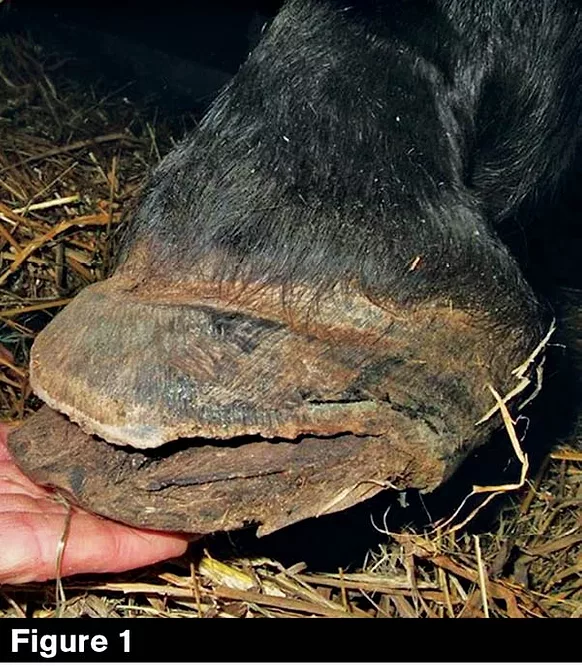American Farriers Journal
American Farriers Journal is the “hands-on” magazine for professional farriers, equine veterinarians and horse care product and service buyers.

Hoof showing separation of the stratum externum from the stratum medium.
The Connemara Pony is an athletic, versatile equine with a kind and willing temperament. The breed is elegant, hardy and intelligent. A good example should show great agility and superb jumping scope. These attributes have made it one of the most popular United Kingdom native breeds.
However, there is a serious genetic condition that can present in the breed. Hoof Wall Separation Disease (HWSD) affects the bond within the hoof wall. The affected animals present with broken and delaminated feet, which struggle to hold shoes or maintain soundness. It is a serious issue and steps are now being taken to screen breeding animals so that the disease does not become more widespread.
HWSD is an autosomal recessive genetic disorder resulting from a single gene mutation. This means that there is a permanent alteration in the DNA sequence of the animal (Finno, 2015).
This mutated gene can be passed onto the offspring regardless of the gender of the parent or offspring (autosomal). The fact it is a recessive gene means that symptoms will only present, if, the offspring inherits the mutated gene from both parents. A pony may be a carrier, with only one copy of the mutated gene. A carrier may…